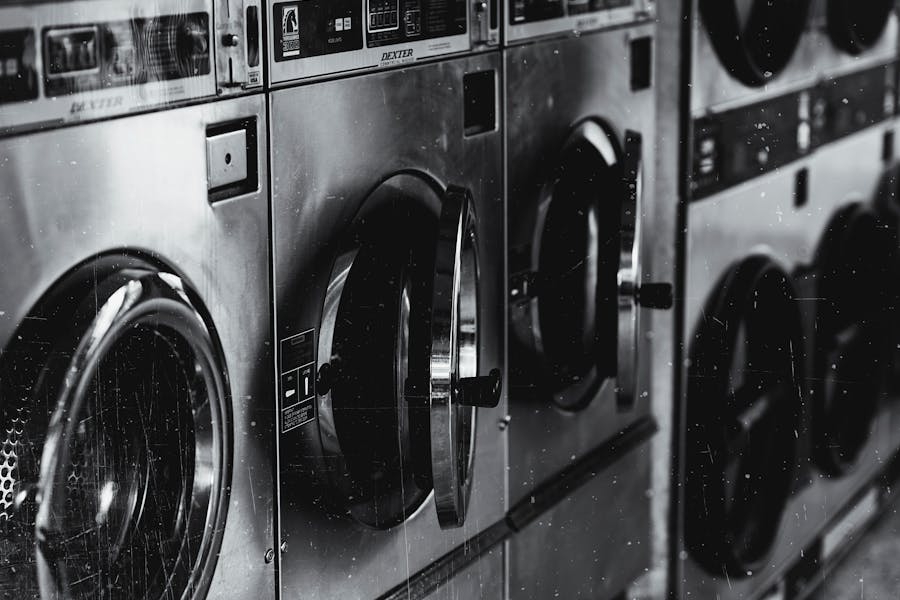
Can You Plumb in Your Own Washing Machine? A DIY Guide to Installation for London Homes
Living in London means juggling busy schedules, tight spaces, and the occasional home DIY project. If you’ve just bought a new washing machine and are wondering whether you can save some money by installing it yourself, the good news is that you likely can!
Whether you’re in a flat in Camden or a terraced house in Brixton, with a few basic tools and a little know-how, you could have your machine up and running in no time.
However, London properties can come with their own quirks, like older pipework or space constraints, so if you run into issues or have a more complex setup, calling a local plumber might be your best bet.
Follow this step-by-step DIY guide to see how easy it can be to plumb in your washing machine yourself.
Remember though, if you have a complicated setup, encounter problems, or need pipework replacing – or you’re simply not confident at DIY – it’s best to call in a plumber in London.
5 Easy DIY Steps to Plumb in Your Own Washing Machine
Below is a step-by-step look at how to install a new washing machine in your kitchen or utility room.
But first, here’s what tools and equipment you should have ready:
- Mole grips/locking pliers
- A bucket and towel/rag
- A spirit level.
You might also want someone else with you to help you move the washing machine, as they can be heavy.
Step 1 – Remove The Old Appliance
If you’re replacing an old or broken washing machine, your first task will be to remove it. Here’s what you need to do:
- Switch the washing machine off at the mains and unplug it
- Turn off the cold water supply isolating valve – this usually looks like a small blue tap
- Grab a bucket and then unscrew the cold water inlet hose – catch any water that comes out of it in the bucket
- Pull out the waste water outlet hose from the upright pipe – you can also place this in the bucket to catch any drips
- Move the machine out of the way, ready to install the new one.
Step 2: Unpack Your New Washing Machine
Remove all packaging from your new washing machine. This includes what are known as carriage bolts, which stop the drum from moving around and becoming damaged during transit. The installation instructions will help you find and remove these, but it’s usually just a case of unscrewing the four bolts.
Position the washing machine near the installation location (close enough to connect the supply and waste hoses) but don’t worry about getting it into the exact position just yet.
Step 3 – Attach The Cold Water Inlet Hose And Waste Pipe
Now you’ll be doing the reverse of what you did to remove your old washing machine. You need to connect the cold water supply to the back of the washing machine (usually at the top) and to the cold water supply. You can use the mole grips/locking pliers to ensure the hose is tightly screwed on.
The waste pipe is really simple to connect. It’s already attached to the washing machine, so all you need to do is place the other end into the upright pipe. Follow the installation instructions for details of how far to put it in.
Step 4 – Turn On The Cold Water Supply And Check For Leaks
When you’re happy everything is connected securely, you can turn on the cold water supply isolating valve. Water will run along the pipe to the washing machine. You should check carefully for any drips or leaks. If you spot any, the hose connection needs to be tightened.
Step 5 – Position The Washing Machine And Check That It’s Level
It’s finally time to move the washing machine into its final position. Do it carefully to make sure none of the hoses become disconnected, squashed or kinked behind the machine.
Once in place, use a spirit level to check whether the machine is level. You might need to adjust the feet on the washing machine if not.
Stuck Or Facing A Problem? It Could Be Time To Call A Professional Plumber In London
If you get stuck with any of the steps above, or experience a leak or other problem, you might need professional help.
The same goes for leaky cold water supply isolating valves, damaged pipework or blocked waste pipes. It’s not a good idea to install a new washing machine until those issues are sorted out.